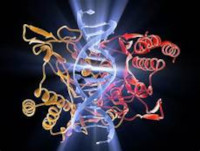Protective Effects of Curcumin against Nicotine-Induced Damage on Esophagus Tissue in the Wister Rat
http://www.doi.org/10.26538/tjnpr/v7i6.6
Keywords:
Histopathology, Antioxidants, Waterpipe smoking, CurcuminAbstract
Curcumin has been used in folk medicine for thousands of years as a food and traditional medicine. It is renowned for its antibacterial and antioxidant properties. This study assesses the potential impact of waterpipe smoking on the esophageal tissues of Wister rats (Rattus norvegicus). Furthermore, it aimed to investigate curcumin's efficacy in reducing cytotoxicity induced by tobacco smoking. A total of 27 Wister male adult rats were separated into three groups first acted as a control, the second group smoked, and the third group received daily intraperitoneal injections of 40 mg/kg of curcumin. Additionally, the rats were exposed to waterpipe smoking using a smoking machine for 30 days before dissecting the rat; serum samples were collected to measure enzyme activity. The esophagus was then isolated and prepared for light microscopy analysis. According to the findings of this study, it has been demonstrated that curcumin effectively decreased the activity of liver enzymes (AST, ALT, and LDH) which reduced the harmful effects
of waterpipe smoking in rats. Treatment of curcumin with exposure to WPS showed a reduction in the thickness of the keratin layer with less inflammation in comparison to the waterpipe only; the results indicate that curcumin has a protective impact.
References
Szalontai K, Gémes N, Furák J, Varga T, Neuperger P, Balog JÁ, Puskás LG, Szebeni GJ. Chronic obstructive pulmonary disease: epidemiology, biomarkers, and paving the way to lung cancer. J Clin Med. 2021;10(13):2889.
Jha P. The hazards of smoking and the benefits of cessation: a critical summation of the epidemiological evidence in highincome countries. Elife. 2020;9:e49979.
Ibrahim HM, Waziri BI, Aliyu A, Atiku MK. Effect of Shisha (Water-Pipe) Smoking on Serum Lipid Profile and Antioxidant Vitamins among Smokers in Kano Metropolis. SAR J Med Biochem. 2022;3(3):58–64.
Unsal V, Dalkıran T, Çiçek M, Kölükçü E. The role of natural antioxidants against reactive oxygen species produced by cadmium toxicity: a review. Adv Pharm Bull. 2020;10(2):184.
Rashid K, Sil PC. Identification and Extraction of Antidiabetic Antioxidants From Natural Sources. Discov Dev Antidiabetic Agents from Nat Prod Nat Prod Drug Discov. 2016;63.
Khwaldeh A, Siyam AA, Alzbeede A, Farajallah M, Shraideh Z, Badran D. Ameliorative effects of curcumin and caffeic acid against short term exposure of waterpipe tobacco smoking on lung, heart and kidney in mice. Anat Cell Biol. 2021;54(1):93–103.
Shraideh ZA, Awaida W, Najjar H, Musleh M. A modified smoking machine for monitoring the effect of tobacco smoke on Wister rats. Jordan J Biol Sci Short Commun. 2011;4(2):109-112.
Kamimura D, Cain LR, Mentz RJ, White WB, Blaha MJ, DeFilippis AP, Fox ER, Rodriguez CJ, Keith RJ, Benjamin EJ, Butler J. Cigarette smoking and incident heart failure: insights from the Jackson Heart Study. Circulation. 2018;137(24):2572–82.
Gallucci G, Tartarone A, Lerose R, Lalinga AV, Capobianco AM. Cardiovascular risk of smoking and benefits of smoking cessation. J Thorac Dis. 2020;12(7):3866.
Kuang J jie, Jiang Z min, Chen Y xian, Ye W peng, Yang Q, Wang H zhong, Wang HZ, Xie DR.. Smoking exposure and survival of patients with esophagus cancer: a systematic review and meta-analysis. Gastroenterol Res Pract. 2016;2016.
Jain D, Chaudhary P, Varshney N, Bin Razzak KS, Verma D, Khan Zahra TR, Janmeda P, Sharifi-Rad J, Daştan SD, Mahmud S, Docea AO. Tobacco smoking and liver cancer risk: potential avenues for carcinogenesis. J Oncol. 2021; 5905357.
Tanvir R, Javeed A, Bajwa AG. Endophyte bioprospecting in South Asian medicinal plants: an attractive resource for biopharmaceuticals. Appl Microbiol Biotechnol. 2017;101:1831–44.
Apaya MK, Kuo TF, Yang MT, Yang G, Hsiao CL, Chang SB, Lin Y, Yang WC. Phytochemicals as modulators of β-cells and immunity for the therapy of type 1 diabetes: Recent discoveries in pharmacological mechanisms and clinical potential. Pharmacol Res. 2020;156:104754.
Herisman MW, Gani AP, Murwanti R. Effect of Curcuma mangga and Curcuma longa on Oxidative Stress-related Diseases and ROS Level: A Recent Study. Trop J Nat Prod Res. 2022;6(5):668-672
Salahshoor M, Abdolmaleki A, Roshankhah S, Jalali A, Jalili C. Curcumin recovers the toxic effects of nicotine on hippocampus cornu ammonis 1 in rats. J Pharmacol Pharmacother. 2019;10(3):85–92.

Published
How to Cite
Issue
Section
License
Copyright (c) 2023 Tropical Journal of Natural Product Research (TJNPR)

This work is licensed under a Creative Commons Attribution-NonCommercial-NoDerivatives 4.0 International License.


















